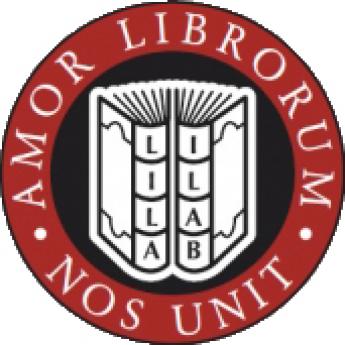The Professionalization of Library Theft

By Travis McDade
Travis McDade is Curator of Law Rare Books at the University of Illinois College of Law and author of the upcoming Thieves of Book Row: New York’s Most Notorious Rare Book Ring and the Man Who Stopped It. The book will published by Oxford University Press in May 2013. In this article Travis McDade, who also teaches a class called “Rare Books, Crime & Punishment”, writes about how stolen books can be identified and what book thieves do to prevent this.
The indication that an ordinary string of rare book thefts has evolved into a terrifying string of rare book thefts often comes down to this: the presence of a man whose sole job it is to get rid of library ownership marks. No other single trait indicates as certainly that a theft ring has moved from the amateur to the professional ranks. So while it seems encouraging that five people involved in the Girolamini Library thefts have been sentenced for their crimes, it had better only be the beginning of people being prosecuted. One of the men charged two months ago with playing a part in the scheme was a Bologna bookbinder whose job was to scrub books of their marks — and his presence, like that of a single cockroach, signals a much larger problem.
Almost all library books are marked in some way by their owner institution, usually with one of three types of stamp: ink, emboss or perforation. There are also a host of secondary identification marks, including bookplates pasted inside the front cover and cataloguing information written on the title page or gutter. All of these must be destroyed for a professional thief to feel safe.
Solo thieves — the dreaded one-man-bands of the cultural heritage theft world — do this work themselves, the results of which are often poor. Because these guys have to spend a lot of time worrying about the thefts and the sales, they often give short shrift to the most tedious part of the job, making a hash of it with unsightly, value-killing blemishes — an easy thing to do when mixing bleaching agents and hot irons with paper that is often centuries old. So theft rings that grow to a certain size either develop from amidst their ranks men who have an aptitude for the task, or they simply hire people whose job it is to work with old books.
The American book theft ring I write about in Thieves of Book Row was very particular about scrubbing its books of library markings. It employed a small army of men to steal from America’s libraries to feed the Manhattan book trade, but warned these men against tinkering with book stamps. A botched field-scrub could ruin the value of book — and was, counter-intuitively, an even more tell-tale sign of theft than even the presence of a library stamp, which could often be explained away. Book cleaning was done by a few trusted individuals; in the case of particularly tricky marks, like perforated stamps, the work could be outsourced to England.
This is almost certainly what happened in Italy. A Bolognese bookbinder, who could be trusted both to work with old paper and to keep his mouth shut, would be a go-to guy for tough marks. He would know how to clean pages or, if needed, get rid of them altogether, replacing the marked leaves with either close copies from other editions or pages manufactured expressly for the purpose. This is an act known in the book world as “sophisticating,” and a really fine job of it requires the touch of a craftsman.
The worst news is, like any cottage industry that becomes successful enough to hire specialists, book theft rings that employ task-specific men soon need a guaranteed supply to justify their expense. It’s a feedback loop that all but guarantees that the Girolamini Library arrests and prosecutions have barely scratched the surface.
(This article originally appeared on the OUP Blog, it is presented here by permission of the author and of Oxford University Press. Thank you very much.)
Help to catch book thieves:
>>> Use the ILAB Stolen Book Database

